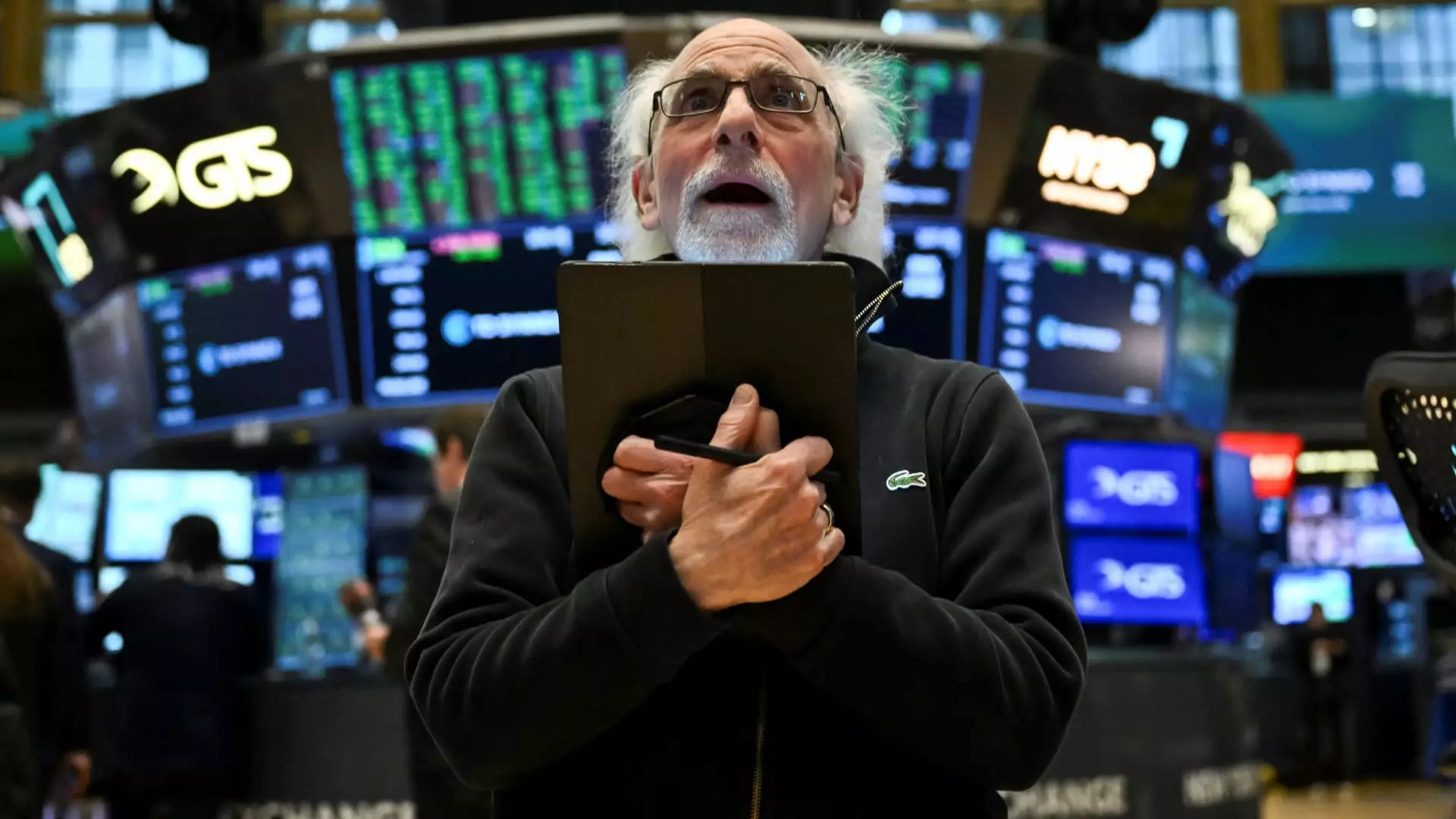The world of finance is often a game of psychological warfare, where perceptions can drastically alter real-time outcomes. On a fateful Wednesday, a seismic shift in the stock market signaled the fragility of hedge fund strategies as a massive wave of short sellers scrambled to mitigate quickly mounting losses. These traders had placed lucrative bets against U.S. stocks, anticipating declines prompted by President Donald Trump’s dire announcements on tariffs. However, the market reacted in a way that left many of those betting against it not just shocked, but scrambling for cover.
Essentially, short selling involves borrowing stocks to sell at a current price, hoping to repurchase them later at a reduced rate. Investors profit from the difference; however, when the tide turns, the sudden surge in stock prices creates an environment ripe for what’s known as a “short squeeze.” This phenomenon makes for volatile trading, where hedge funds rushing to buy back shares inflate prices further, amplifying their losses. The all-too-common trap ensnares these players, highlighting the fragility of their optimistic expectations against a reality that remains perpetually unpredictable.
The Historical Context of Wednesday’s Surge
According to various analysts, this particular Wednesday marked one of the most memorable trading days in recent history, with the S&P 500 securing its third-largest gain since World War II. With short positions having reached heights nearing double those of early 2020—when the market faced dramatic uncertainty due to the onset of the COVID-19 pandemic—many hedge funds found themselves caught in a relentless cycle of panic buying as stocks rallied in an unforeseen manner.
The sell positions that seemed calculated ended up resembling a house of cards as the psychological pressure to close those positions took hold. A staggering 30 billion shares changed hands during this transaction-heavy day, showcasing not only the urgency of the situation but also the sheer weight of speculative trading in today’s markets.
The Role of Market Liquidity and Speculative Behavior
Interestingly, the underlying dynamics of market liquidity and trader sentiment fueled the escalated reactions. A critical aspect to note is that the liquidity of futures contracts plummeted to unprecedented lows, leading to exaggerated price moves. Thinly traded markets can become hyper-sensitive, resulting in monumental shifts from what could otherwise be mere fluctuations. The blend of an overzealous short interest coupled with this thin liquidity formed a volatile brew for catastrophe.
In the latter stages of the day, as the short sellers fled to cover their bets, real buyers entered the arena, snapping up substantial amounts of tech stocks. Yet, while genuine investment aimed at solid companies played a role in the rally, the spiteful momentum driven by desperate short-sellers undoubtedly magnified the surge. Traders opined that the “pain on the short side is palpable,” signaling an unforgiving market where those who gamble against prevailing trends are often left battered and bruised.
The Fallout and Future Predictions
By Thursday, the reality set in. Despite the apparent exuberance in stock prices, the underlying risks remained glaringly evident. Investor sentiment turned cautious as they mulled over the repercussions of high tariffs from China and the uncertainty surrounding ongoing international negotiations. Even with a seemingly buoyant market, analysts recognized that many shorts remained in place. If the market were to rally once more, speculation suggests that we might witness a continuation of this short-covering frenzy, triggering further volatility.
Reports from trading desks indicated that short covering is far from over, suggesting a lingering source for potential market swings. The critical point of contention is whether this volatility will stabilize, or continue spiraling into erratic upward motions fueled by those still tethered to short positions. As the market evolves, it continues to face the age-old tussle between risk and reward, defying predictions and challenging the wisdom of seasoned investors.
The massive stock market events of that fateful Wednesday are a stark reminder of how quickly the tides can turn in financial markets, showcasing the delicate balance between risk strategies and the unpredictable nature of trading psychology. It’s a vivid illustration of why, in the world of finance, one must always tread carefully.

